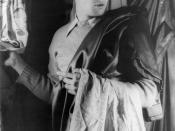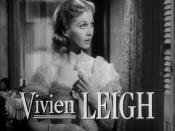Class conflict is represented throughout the play, A Streetcar Named Desire in various ways through characters, symbols, ideas and language. Characters such as Blanche, Stella, Mitch and Stanley are used throughout the text to represent the upper and lower classes, as well as the conflict between the two classes. Symbols, ideas and language help to define the different classes as well as helping to represent the conflict between classes. The language (dialogue) of the characters, symbolic use of names, animal imagery and colour (clothes) and the ideas of cultural capital help to define what the lower and upper classes are.
A Streetcar Named Desire by Tennessee Williams was written in 1947. The story takes place in New Orleans, and can be read as being during any year between May and September. The story revolves around Blanche Dubois and her conflict with Stanley Kowalski. Blanche's character represents the old aristocratic south and the upper class of the play through her manner and cultural capital (her education and sophisticated dialogue).
She's cultivated and bound by heritage (Belle Reve) and tradition. The upper class is associated with intellectual strength. Stanley represents the new industrial south and the lower class of the play through his job at the steel mill, use of slang and his ignorance. His society is based on force and ingenuity. The lower class is associated with physical strength. From the beginning, the conflict between the two classes is prominent. The working class is predatory and survives and triumphs with two elements, which the upper class lacks, vitality and strength. The conflict of class is evident and we see how Blanche and the old south are fragile, and it's only a matter of time before Stanley, the new south crushes it's opposition.
Class conflict is effectively represented through clothes and...


